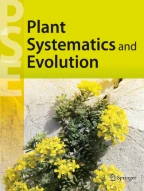595Accesses
Abstract.
Erwinia amylovora is the causative agent of fire blight, a bacterial disease existing as an unsolved problem in most countries where pome fruits like apple (Malus domestica) and pear (Pyrus communis) or ornamental plants of Rosaceae are grown. The primary site of colonization is the open flower. As for the establishment of the disease, the importance of various organs within the flowers is considerably different. The usual place for developing a large epiphytic population is the stigma. The actual infection will be attained by the external washing (rain, heavy dew) of bacteria from the stigma to the hypanthium. The bacteria penetrate through the openings of the nectary, so, the nectarthodes are the main entrance sites for them. Nectar is an excellent medium for growth of fire blight bacteria. Most often, however, the incidence of disease is significantly less than the percentage of colonized flowers. Little is known about the interrelationships of free moisture, nectar sugar concentration, ovary water potential, fine-structural characteristics of nectaryversus the disease incidence and severity. The aim of this paper is to review the ecology and infection biology ofErwinia amylovora on floral surfaces and in floral tissues.
This is a preview of subscription content,log in via an institution to check access.
Access this article
Subscribe and save
- Get 10 units per month
- Download Article/Chapter or eBook
- 1 Unit = 1 Article or 1 Chapter
- Cancel anytime
Buy Now
Price includes VAT (Japan)
Instant access to the full article PDF.
Similar content being viewed by others
Explore related subjects
Discover the latest articles and news from researchers in related subjects, suggested using machine learning.Author information
Authors and Affiliations
Research and Extension Centre for Fruit Growing, Újfehértó, Hungary, Hungary
T. Bubán
University of Pécs, Department of Botany, Pécs, Hungary, Hungary
Zs. Orosz-Kovács
- T. Bubán
You can also search for this author inPubMed Google Scholar
- Zs. Orosz-Kovács
You can also search for this author inPubMed Google Scholar
Additional information
Received July 8, 2002; accepted October 17, 2002Published online: June 2, 2003
Rights and permissions
About this article
Cite this article
Bubán, T., Orosz-Kovács, Z. The nectary as the primary site of infection byErwinia amylovora (Burr.) Winslow et al.: a mini review.Plant Syst Evol238, 183–194 (2003). https://doi.org/10.1007/s00606-002-0266-1
Published:
Issue Date:
Share this article
Anyone you share the following link with will be able to read this content:
Sorry, a shareable link is not currently available for this article.
Provided by the Springer Nature SharedIt content-sharing initiative



